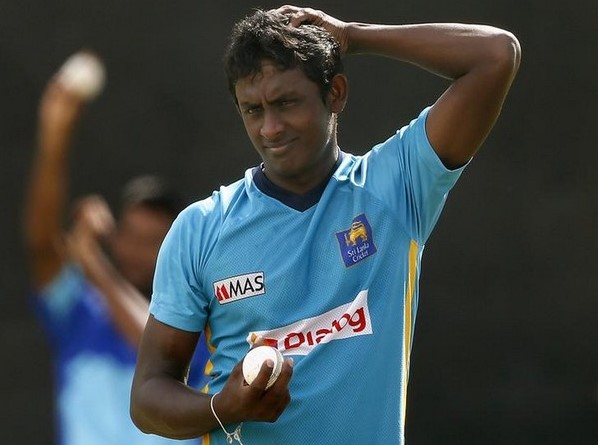Most Runs: T20 cricket, the shortest and most explosive format of the game, has transformed the way cricket is played and enjoyed around the world. With high-powered batting and aggressive stroke play, bowlers are often on the receiving end of massive run chases. Despite the brevity of the format, T20 cricket has witnessed some incredible performances with the ball, but there are also instances where bowlers have conceded an extraordinarily high number of runs, making it a record that they would rather forget. In this article, we explore the instances of the most runs conceded by a bowler in T20 cricket, what led to these high totals, and the lessons learned from these performances.
Most Runs T20 Cricket: A Bowler’s Challenge

Most Runs: T20 cricket is notorious for being a batsman’s game. With just 20 overs to make an impact, the batsmen are often encouraged to go after every delivery, which puts immense pressure on the bowlers. The fielding restrictions, powerplays, and the presence of aggressive hitters often result in large totals being posted, but at the same time, it can lead to some bowlers getting hammered for massive runs.
Most Runs: While T20 bowlers must possess the ability to execute deliveries with precision under pressure, there are moments when even the best bowlers get taken to the cleaners. Factors like poor execution, bad luck, and facing some of the most destructive batsmen in world cricket often contribute to these high run totals.
The Record for Most Runs Conceded in T20 International Cricket
Most Runs: As of 2025, the record for the most runs conceded by a bowler in a T20 International match stands at 64 runs, a number that reflects just how volatile and unpredictable T20 cricket can be. This record is held by Ajanta Mendis, the Sri Lankan mystery spinner, who had an extremely tough outing during a match against the Zimbabwe team.
Ajanta Mendis: The Record Holder

Most Runs: Ajanta Mendis, one of Sri Lanka’s most skilled spinners, holds the record for the most runs conceded in a single T20I match. Despite his remarkable ability to deceive batsmen with his variations, he went for an uncharacteristically high number of runs in one particular match against Zimbabwe. The Zimbabwean batsmen, led by their top order, capitalized on Mendis’ poor execution on that day, and he ended up conceding 64 runs in his 4 overs. Here is a breakdown of Mendis’ performance:
| Bowler | Runs Conceded | Overs Bowled | Economy Rate | Wickets Taken | Match |
|---|---|---|---|---|---|
| Ajanta Mendis | 64 | 4 | 16.00 | 0 | Sri Lanka vs Zimbabwe, 2012 |
Why Did Mendis Concede So Many Runs?
Most Runs: In T20 cricket, the pressure to deliver can sometimes overwhelm even the best of bowlers. On this occasion, Ajanta Mendis struggled due to several factors:
- Batsmen’s Aggression: Zimbabwe’s batsmen, especially the top-order, were in full attacking mode. They played with freedom, which often leads to bowlers having little room for error.
- Poor Execution: Mendis was known for his variations, but on this day, his control was off. He missed the line, and many of his deliveries were dispatched to the boundary by the Zimbabwean batsmen.
- Bad Luck: Sometimes, even with good deliveries, the ball doesn’t always land where you want it to. A mix of shots finding the gap or good timing can lead to a high number of runs being conceded.
- Fielding Restrictions: The lack of fielding restrictions during the middle overs allowed the batsmen to target bowlers like Mendis without being restricted to boundaries or limited by field placements.
Other Instances of High Runs Conceded

While 64 runs in a T20I remains the record for the most runs conceded in a match, there have been other notable performances where bowlers have been hit hard, demonstrating just how challenging the format can be for bowlers. These instances remind us that T20 cricket is about survival, and even the best bowlers can have off days. Here is a look at some other instances of high runs conceded in T20 Internationals:
| Bowler | Runs Conceded | Overs Bowled | Economy Rate | Wickets Taken | Match |
|---|---|---|---|---|---|
| Shane Harwood | 61 | 4 | 15.25 | 0 | Australia vs New Zealand, 2007 |
| Jerome Taylor | 59 | 4 | 14.75 | 1 | West Indies vs South Africa, 2007 |
| Lasith Malinga | 57 | 4 | 14.25 | 0 | Sri Lanka vs India, 2014 |
| Shakib Al Hasan | 54 | 4 | 13.50 | 0 | Bangladesh vs Pakistan, 2009 |
Analysis of High Runs Conceded
From the table above, we can observe some common patterns:
- High Economy Rate: In all these instances, the bowlers have conceded runs at a rate higher than the typical economy rate of around 6-8 runs per over. This reflects the aggressive nature of T20 cricket and the fact that some bowlers struggle to contain runs.
- Lack of Wickets: In many of the cases listed, the bowlers failed to take wickets, which is often a contributing factor to the high runs conceded. If a bowler can dismiss a few batsmen early, it can reduce the impact of high scoring in the later stages of the game.
- Aggressive Batting: Aggressive batting strategies have contributed significantly to these high totals. Batsmen taking calculated risks against bowlers who are struggling to get their line and length right have consistently piled on the runs.
- Pressure of the Format: T20 cricket is built around explosive batting, and even seasoned bowlers can sometimes find themselves under extreme pressure, especially when they are part of a high-scoring match or a critical phase in a tournament.
How Bowlers Can Learn from These Performances

While conceding high runs in T20 cricket is not ideal, it provides valuable learning experiences. Here are a few lessons for bowlers on how to handle the pressure of T20 cricket:
- Mastering Variations: Bowlers need to develop variations, such as yorkers, slower balls, and bouncers, to keep batsmen guessing. The unpredictability of these deliveries can reduce the scoring opportunities for batsmen.
- Bowling in the Right Areas: Bowlers must focus on hitting the right lengths and areas, even under pressure. The use of yorkers and short-pitched deliveries can limit batsmen’s freedom and help contain the run flow.
- Staying Calm Under Pressure: T20 bowlers must remain calm and focused, even when they are being hit. Overreacting or becoming frustrated often leads to more poor deliveries. Mental strength and calmness are key components of success in T20 cricket.
- Field Placements: Effective field placements can help bowlers restrict boundaries. In T20s, bowlers need to be aware of the areas where the batsmen are most likely to score and adjust field placements accordingly.
T20 cricket is undeniably a fast-paced, high-risk format, which leads to exhilarating matches and often unpredictable outcomes. While the most runs conceded in a T20 match is a record many bowlers would prefer not to hold, these instances highlight the challenges that bowlers face in this format. For Ajanta Mendis and others who have faced high scoring from batsmen, it’s a reminder of the demanding nature of T20 cricket and the necessity for bowlers to continually adapt, learn, and stay mentally strong.
As the game continues to evolve, the role of bowlers will become even more important in helping teams manage the aggressive batsmen they face. After all, T20 cricket may be a batsman’s game, but it’s also a stage where bowlers have the chance to make their own mark – whether by containing runs or defending a challenging total.

